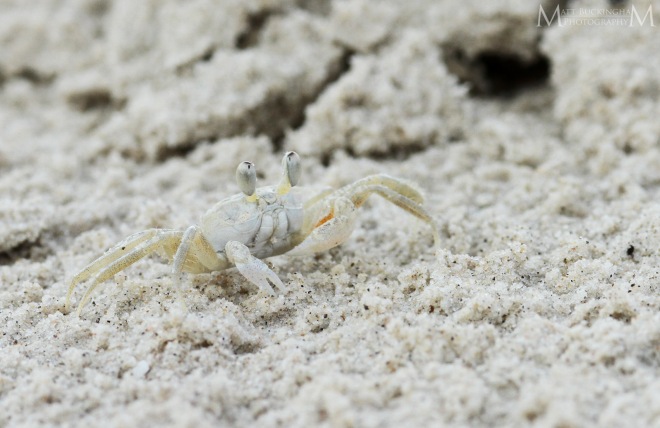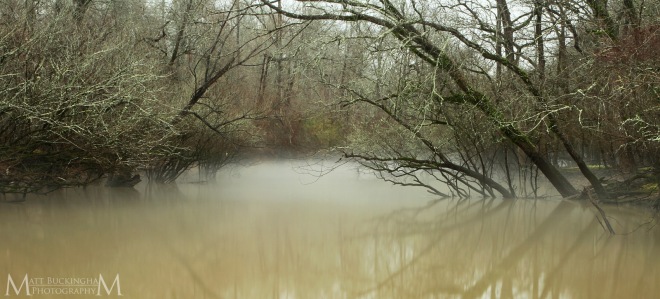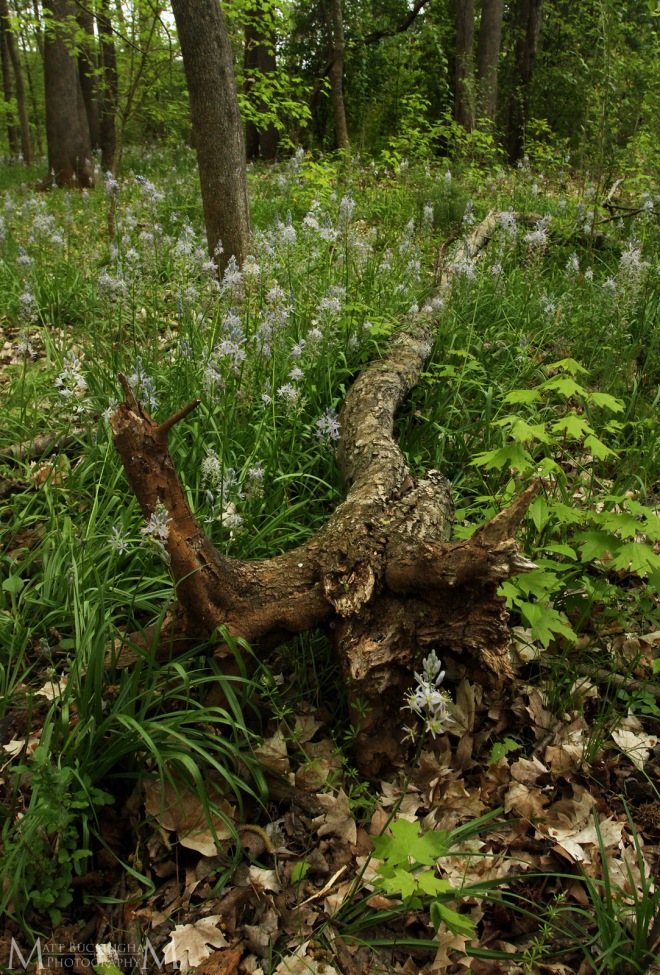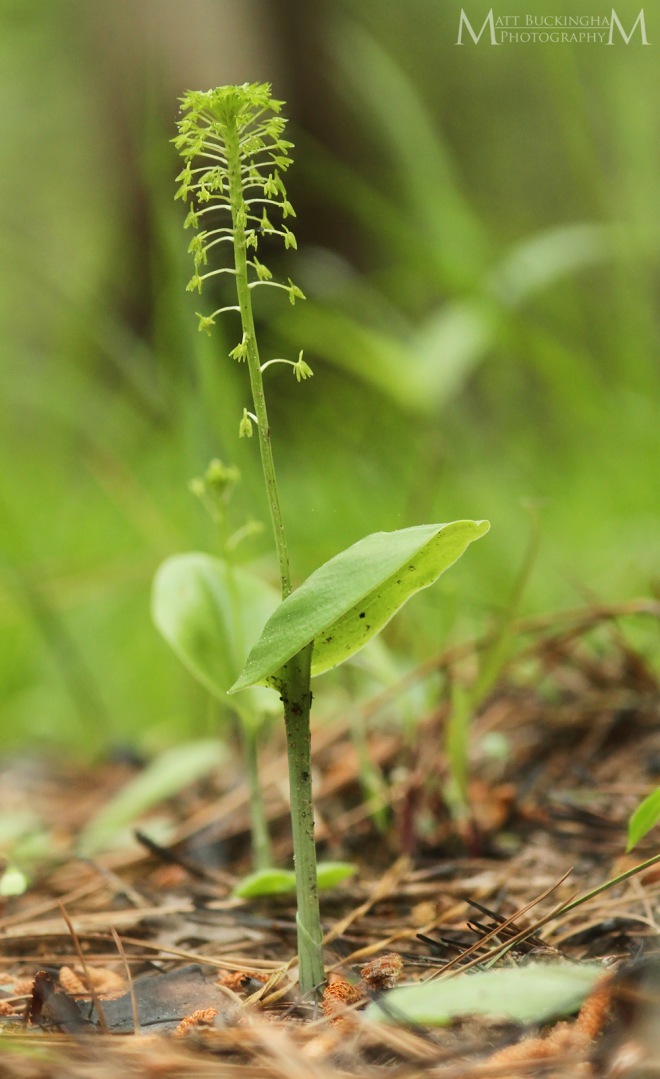
S-banded Tiger Beetle
With the arrival of our first “real” cold front of the season, and temperatures in the extended forecast barely creeping out of the 60s, I think it’s safe to say that fall has arrived. The forests are full of fungi and fall-blooming asters. And just the other day I found several Marbled Salamander, a true harbinger of fall.
But before I set out to bask in the beauty of Autumn, I find myself thinking back to a summer spent in the forests of my home. This year’s was a particularly hot, dry summer. After a few years of relatively mild summers, at least in terms of Texas, this one was intense. Yet even in the midst of heat waves and drought there are natural treasures to be found by those willing to look.
I found one such treasure on a sweltering day in late June. On the advice of my friend Joe Liggio, author of Wild Orchids of Texas, I went to check on a local population of Crest Coralroot Orchids (Hexalectris spicata). This is a wide ranging species, occurring from Arizona to Florida to Virginia. In Texas they occur in scattered populations throughout the state, with the most robust populations being in the White Rock Escarpment of north-central Texas, the Edward’s Plateau, and the mountains of the Trans Pecos. In the Pineywoods they are only known from a few localized populations. Here they are generally found singly, or in small, scattered clumps. This year however, we found a huge clump of over 30 stems.
The Crested Coralroot is a non-photosynthesizing mycoheterotroph, meaning that it lacks chlorophyll and has no real leaves to speak of. It lives out its days a little more than an underground rhizome and small roots that penetrate the mycorrhizal fungi of tree roots in order to rob them of a portion of their energy and nutrients. All that alerts the average forest-goer to their presence is the flesh colored flowering stalk and purple-streaked flowers that emerge all to briefly in the early summer.

Crested Coralroot
Emerging from forest floors rich in decomposing organic material in early June is the Ox Beetle (Strategus aloeus). These massive coleopterans are among the largest insects in the United States. The pronotums of males are decorated with three horns that are utilized in combat to win the favor of females. These massive beetles are familiar visitors to porch and gas station lights on warm, humid, moonless summer nights.

Male Ox Beetle
Another, much more occasional, visitor to night lights is the assassin bug known as Microtomus purcis. So named for their tendency to ambush other insects and dispatch them with their long spear-like beak, assassin bugs come in a variety of shapes, sizes, and colors. Microtomus purcis is one of the largest, and most striking. When not visiting man-made lights in errors, they spend much of their time hidden beneath the bark of rotting tree trunks.

Microtomus purcis
We spent much of July away from the Pineywoods, visiting the sky islands of West Texas and the beaches of the Upper Texas Coast. I could not resist, however, seeking out the brilliant orange Platanthera orchids that light up the bog like tiny torches. There are four species in Texas, however this year I would only photograph two of them. Interestingly, I would find them both on the same day.
In late July we traveled to the Big Thicket, where deep in a mosquito infested baygall I spotted the brilliant inflorescence of the Crested Fringed Orchid (Platanthera cristata). This is perhaps the second rarest of our Platanthera species, only known from a few sites in the central and southern Pineywoods. In Texas they seem to prefer the shaded, highly acidic conditions of forested seeps, occurring either on their margins or interiors. I have also found them at acidic seeps along springfed streams. They are generally in the company of a variety of ferns, and other forest seep specialists like Nodding Nixie (Apteria aphylla). This seemed a good year for them. I often wonder what triggers an orchid bloom, as some years none will bloom, other years only a handful, and that rare year where many will bloom. Rainfall no doubt plays some important roll, but as to when the rain should fall to trigger the bloom and what other factors may contribute, I am at a loss.

Crested Fringed Orchid
After leaving the baygall we traveled east to a wetland pine savannah where we found the enigmatic Chapman’s Fringed Orchid (Platanthera chapmanii). P. chapmanii occurs in scattered populations in Texas, Mississippi, Florida, Georgia, and North Carolina. It is believed by many to have arisen from an ancient hybrid of P. cristata and P. cilliaris, seeming to display characteristics of both. It can be differentiated from the former by its long beard and reflexed lateral sepals. It differs from the latter by its hooked columns. In Texas P. chapmanii is known from a few remnant wetland pine savannahs in the Big Thicket.

Chapman’s Fringed Orchid

Chapman’s Fringed Orchid in a wetland pine savannah
Growing alongisde the Chapman’s Orchids were a variety of carnivorous plants, including the conspicuous Pale Pitcher Plant (Sarracenia alata). The leaves of these carnivores, known as pitchers, are hollow and form long tubes with pools of digestive enzymes at their base. Unsuspecting insects that enter the pitchers may become trapped in the enzyme soup, where they are slowly digested, nourishing the plants.

Pitcher Plants in Love
In early August Caro and I found ourselves in pursuit of another orange beauty, the Carolina Lily (Lilium michauxii). Uncommon in Texas, the Carolina Lily grows in rich, mature forests, generally on hardwood slopes, though it may occur on rocky slopes dominated by Longleaf Pine. We actually spotted our first lily of the season growing along a county road in a remnant patch of forest surrounded by pine plantations.
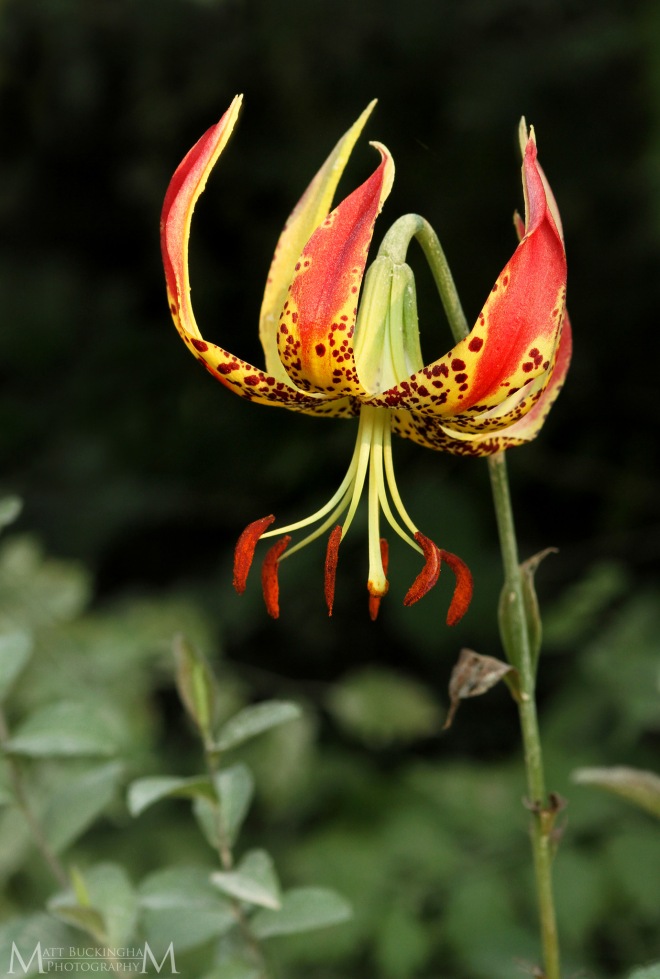
Carolina Lily
A few days later we went to visit a population that Caro had spotted last year long after antithesis. This year we found them in full bloom, and even spotted one plant that had three flowers, something I had never seen before.
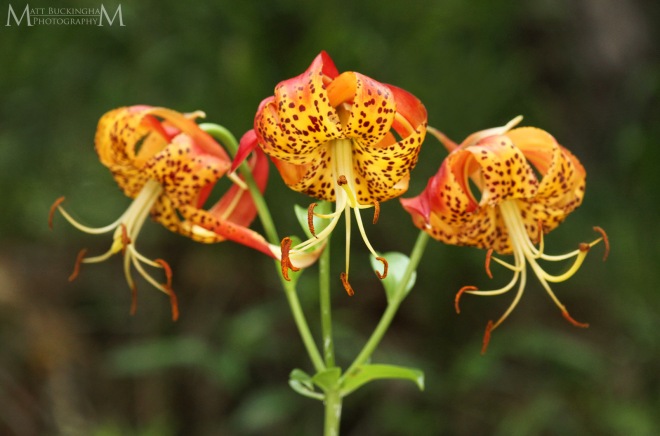
Carolina Lily
Carolina maintains our garden, which is full of a variety of native plant species. A benefit to a diversity of native plants in our yard is that we are able to attract a variety of native pollinators. And with the pollinators come the predators. In essence we get to observe the food chain in action every day. One of my favorite back yard predators is the Widow Skimmer, which stalks the garden and occasionally pauses for a brief photo shoot.

Widow Skimmer
One of my favorite summer past-times is wandering along the numerous clear, cold, springfed streams that transect portions of the Pineywoods. There is so much to see beneath the water, along the banks, and in the surrounding forests. It was on the banks of one such stream that I spotted these striking red fungi.

Fungi
Late summer brings with it a peak in tiger beetle activity. Undisturbed beaches along streams and rivers may literally be swarming with a variety of species, voraciously chasing down any prey item unfortunate enough to get in their path. One species, the S-banded Tiger beetle (Cicindelidia trifasciata) was historically considered a species of the coast, however in recent years it has been found along waterways hundreds of miles inland. In the Pineywoods it is now quite common in many areas.

S-banded Tiger Beetle

S-banded Tiger Beetle
The Bronzed Tiger Beetle (Cicindela repanda) is a wide-ranging, somewhat variable species. Their elytra may appear dark brown, coppery, or even golden under the right light conditions. They are commonly encountered on sandy stream banks and sandbars of streams and rivers.

Perhaps the most commonly encountered Tiger Beetle in the Pineywoods is the Ocellated Tiger Beetle (Cicindelidia ocellata). Unlike most species of the Pineywoods, which are characteristically eastern and at the western edge of their range, the Ocellated Tiger Beetle is primarily a species of the southwest and reaches the eastern limit of its range here.

Ocellated Tiger Beetle
A visit to my good friend James Childress‘s farm is always good for turning up a few invertebrates. The plants and woodpiles along his cabin harbor rich arachnid diversity, and we are always treated to a wealth of spider sightings. Perhaps the most entertaining of all of the farm’s eight-legged denizens is the Bold Jumping Spider (Phiddipus audax).

Bold Jumping Spider
Under a chair on James’s patio we found this large female Black Widow (Latrodectus mactans). Perhaps the most famous/infamous spider in the country, the Black Widow has a reputation of being dangerous and ruthless due to its potent venom and tendency to cannibalize males seeking mating opportunities. In reality, they are docile, gentle creatures disinclined to bite.

Black Widow
As August turned to September, my friend Scott Wahlberg spotted something truly remarkable. Deep in a mature hardwood stream bottom he caught a glimpse of a massive Canebrake Rattlesnake (Crotalus horridus) that we estimated to be pushing five feet in length and as thick as my upper arm. Finding this snake was a reminder that all manner of fantastic creatures are hidden deep in the forest, many of which will never be seen by visitors to their woodland realm. We were fortunate, however, to see one of these elusive forest spirits. In a time and place when so many seem determined to wipe these beautiful animals out based on unfounded fears and ignorance, it is nothing short of incredible that this snake would live long enough to attain such an impressive size. Spending a moment with this gentle giant truly was a gift from the forest.

Canebrake Rattlesnake
Back at James’s farm the hummingbirds had arrived in force. South-bound Ruby-throated Hummingbirds (Archilochus colubris) begin arriving in the Pineywoods in late summer. Dozens of these tiny aerial acrobats were fighting for position among James’s feeders, eager to refuel and prepare for the continued journey south.

Ruby-throated Hummingbird
Many shorebirds also pass through the Pineywoods in East Texas as they migrate south. In early September while laying flat on a river sandbar photographing tiger beetles I caught a blur of motion our of the corner of my eye. Slowly I turned my head to focus on this new distraction, and saw that it was a Spotted Sandpiper (Actitis macularis) darting back and forth in pursuit of invertebrate prey. Though the bird was only about 25 feet away, it was still too far for my macro to reach. Slowly I crept backwards, and then made my way to my truck to seek out my telephoto lens. I could only hope that the tiny hunter would stick around. As I retreated I watched the shorebird make several mad dashes in the area I had just left, undoubtedly snatching up some of the tiger beetles I had just been observing.
I made it to the truck and equipped my bird lens. I then cautiously made my way back to the sandbar. At first I couldn’t see the sandpiper, but after some time it became visible behind a small rise in the sand, tail a-bobbing. I got into the water and laid flat, trying to conceal as much as my form as possible. I slowly moved toward my quarry, and found it to be surprisingly tolerant. Most shorebirds are in their basic, or non-breeding plumage this time of year. In the Spotted Sandpiper, I find this look to be just as striking as its breeding plumage, particularly the fine details on the wing coverts.
I watched the sandpiper through my lens as it moved up and down the edge of the sandbar, stalking and pouncing on prey, and flipping leaves and other bits of cover to see what tasty morsels might lie beneath. After it had scoured most of the sandbar’s perimeter it took off upriver, flying southward with its characteristic erratic wingbeats. I was left with a few images and a fine memory of an unexpected encounter of the best kind.

Spotted Sandpiper on the prowl

Spotted Sandpiper

Spotted Sandpiper
I can’t say that I’ll miss the summer heat, but I will miss many of the familiar species that vanish for the year as summer turns to autumn. I can’t be too sad, however, as each season in the Pineywoods has a unique cast of characters, and each year I look forward to seeing familiar faces and those that I have not yet had the pleasure of meeting in these wonderful, diverse forests.














